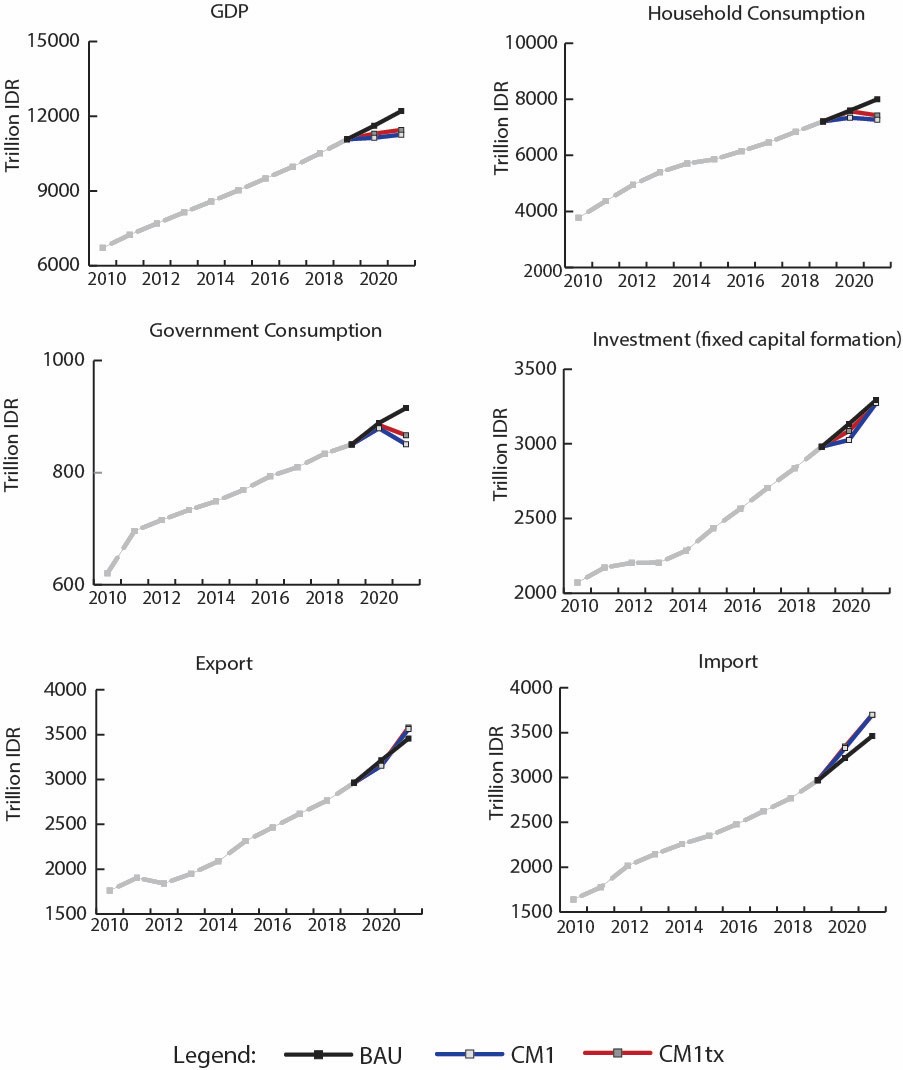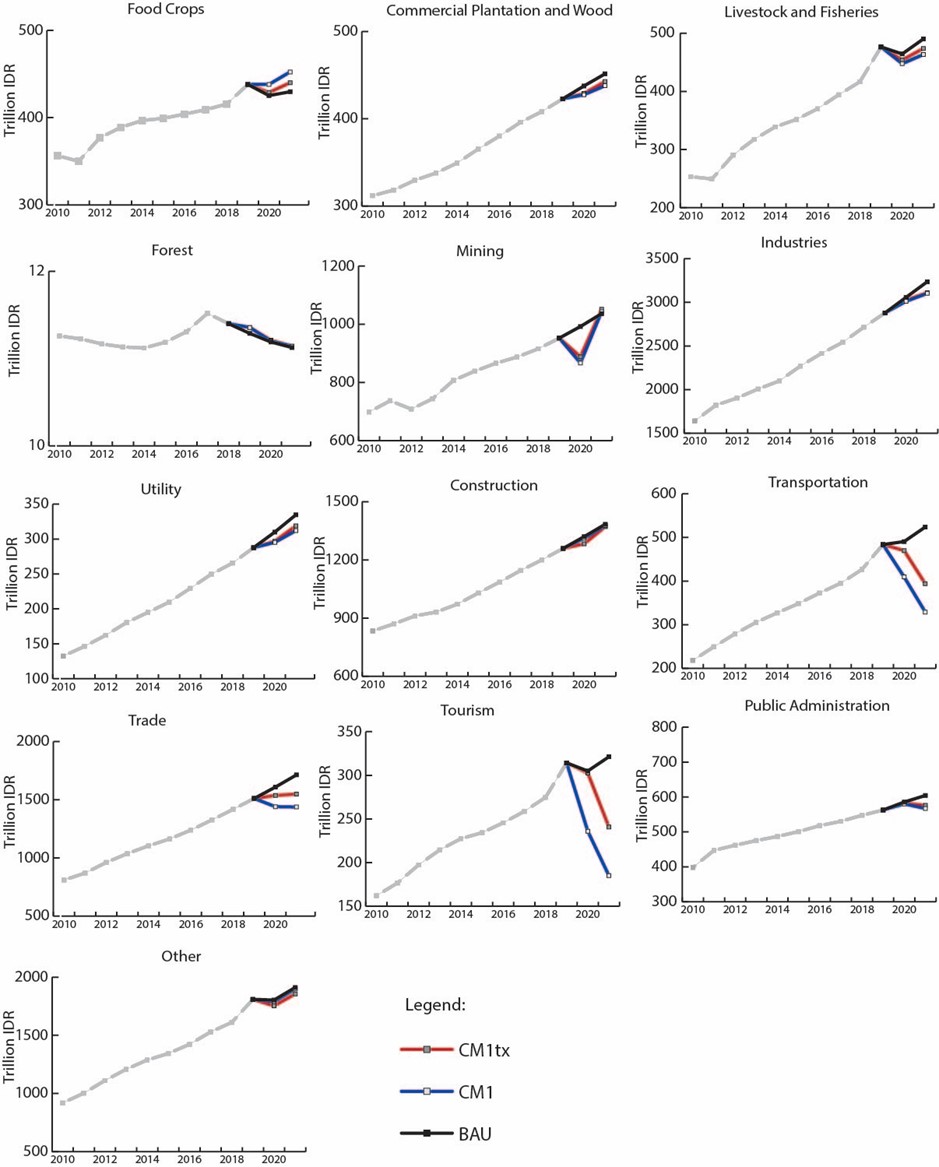論文情報
An assessment of the short-term impact of COVID-19 on economics and the environment: A case study of Indonesia
著者:Marissa Malahayati, Toshihiko Masui, Lukytawati Anggraeni
年:2021
掲載誌:EconomiA
キーワード
COVID-19, Computable general equilibrium (CGE), Land demand, Emission reduction
概要
The COVID-19 pandemic has already made a significant impact on various sectors. No country was fully prepared to face this global pandemic, and Indonesia is no exception. For Indonesia, this pandemic shook not only the public health service system but also the economy. This study makes projections related to the impact of this pandemic on the Indonesian economy by utilising a computable general equilibrium (CGE) model. Additionally, we calculate the land needed to cover the demand for agricultural products, as well as the level to which emissions can be reduced. Our simulation shows that, along with every shock caused by COVID-19 to national supply and demand, Indonesia will be experiencing economic stagnation by 2021, with the gross domestic product (GDP) level 4–8% lower than the business as usual (BAU) level during the pandemic (2020–2021). (Fig. 1)

CM1: Existence of supply or demand shock caused by the COVID-19 pandemic.
CM1Tx: Existence of supply or demand shock caused by the COVID-19 pandemic + fiscal incentives from the government.





